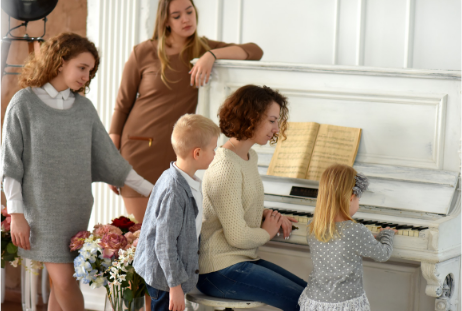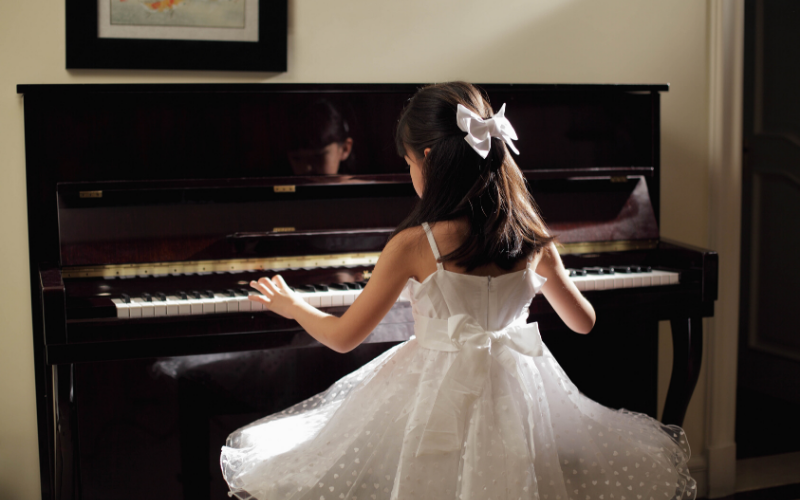facebooktwitterpinterestinstagramyoutubeLearning to play the piano or any instrument for that matter sounds like fun, but can be a daunting task. One of the reasons many kids drop out from learning piano, is that it is not all fun and games. So it is important to...

8 ‘Unbelievably Easy’ Steps To Introduce The Quarter Rest
8 ‘Unbelievably Easy’ Steps To Introduce The Quarter Rest
See below for a Free Printable Pack to go with the post.
Teaching notes and rests, their values and how they can be identified, and played is something any parent can do in the homeschool if they have access to the correct tools and guidance.
Therefore today I’m going to give you the necessary tools and also explain the exact steps you can use to easily introduce the Quarter Rest to your kids.
So what are Quarter Rests? They are similar in value to Quarter Notes, but no note is played.
They basically extend the silence by one beats.
If you haven’t already introduced the Quarter Note, do that first, you can find the steps, flashcard and printable in the post 6 ‘Ridiculously Simple’ Steps To Teach Quarter Notes.
And here’s how you can introduce the Quarter Rest to your kids in the homeschool.
Show The Note And The Rest
Yes, it is as easy as that.
Show them the flashcard of the note and the rest side by side.
Tell them that the Quarter Rest (point to it) is similar to the Quarter Note and consists of 1 beat.
Explain The Difference
Don’t forget to explain the difference.
With a Quarter Note, we actually play a note, but with a Quarter Rest we don’t play a note, rather, there is silence for 1 beat, wherever there is a Quarter Rest.
Ask Them Both Names
Yes, ask them to tell you the alternate name for the Quarter Rest.
Since they know that the Quarter Note is called a Crotchet, it is very likely that they will make the connection and tell you that the alternate name for the Quarter Rest is a Crotchet Rest.
Clapping
Now comes the interesting part. Ask them to clap the Crotchet Rest.
Remember, a Crotchet Rest means there is silence for 1 beat, so there is no clapping only counting one beat.
Understanding The Quarter Rest
To make the previous step less confusing, you draw or show a Whole/Half or Quarter Note before the Quarter Rest. Then ask them to clap.
So, they should clap for the specific note you drew, then count the correct number of beats for that note, and finally count 1 more beat to signify the Quarter Rest.
On The Keyboard
Repeat the above step on the keyboard.
Have them play the note first and count the corresponding number of beats and then count an additional 1 beat to signify the Quarter Rest.
Writing The Quarter Rest
Now teach them how to correctly write the Quarter Rest.
Please use the printable I have included for this exercise.
Identifying The Quarter Rest
Finally it is time to look at different sheets of music and identify the Quarter Rests.
Again you can use the printable I have included for this post.
Weren’t the steps as easy as I promised?
So what are you waiting for?
Grab the printable and the flashcard and go get started.

Karen Cadera
Founder/Creator
Mom, Teacher, Minimalist, Zero Waste Enthusiast, Multi Pod.
My daughter loved the games, but there were also worksheets and videos. The weekly lesson plans were complete, and I never questioned what I should be doing next.
This program reminded me (and allowed me to teach my son) how to read music. To me, that was the most important thing that we learned together. Of course, it was very rewarding for me to watch my son play the piano with both hands at the same time, while reading sheet music. His favorite parts of the course were actually playing the songs and doing the worksheets provided.
Download the FREE Music Theory Worksheet
Articles That Maybe Of Interest To You
5 Awesome Life Lessons Your Child Will Acquire When Learning To Play The Piano In The Homeschool
6 ‘Amazing Games’ To Play When Introducing Whole/Half/Quarter & Eighth Notes & Rests To Kids
facebooktwitterpinterestinstagramyoutubeSee below for a Free Printable Pack to go with the post.When you are teaching notes and rests to kids in quick succession, it can be confusing. The easiest way to mitigate this problem is to play different games to reinforce...
9 Thing Your One On One Music Teacher Will Not Tell You
facebooktwitterpinterestinstagramyoutubeEven today in the era of online learning I still find parents who insist that nothing can take the place of one on one piano lessons. While this is true, it is not absolutely true. This I would have to say is the GREAT one on...













